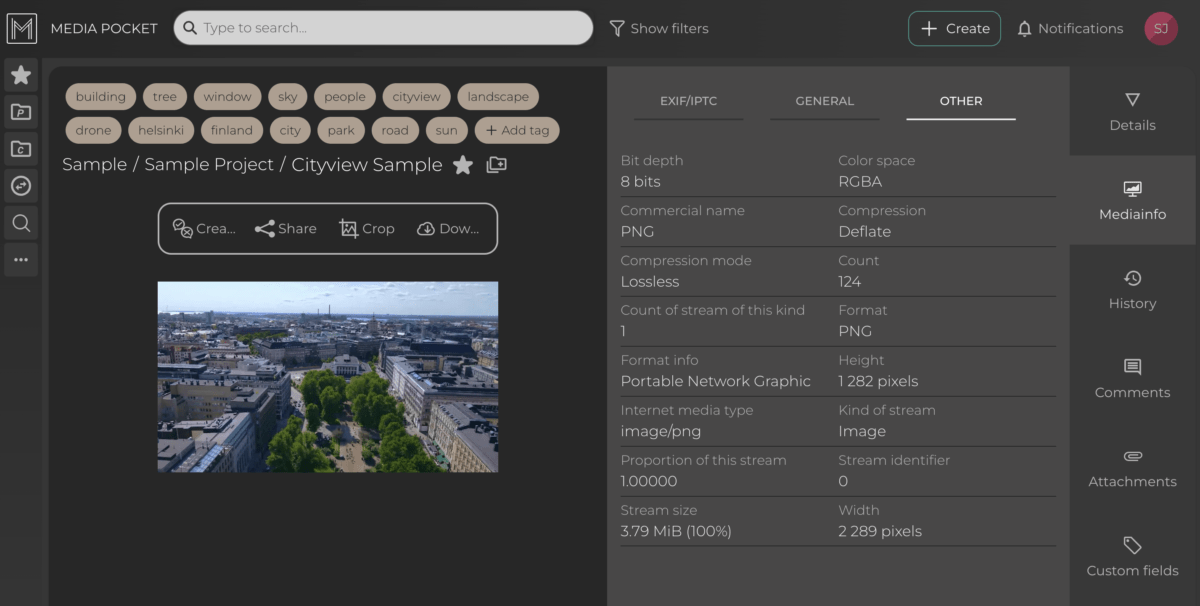
MAM and DAM Taxonomy and Metadata Are at the Heart of a Successful Asset Management Experience
To get the most out of your own content and assets, you need a DAM or MAM system that enables a comprehensive taxonomy and metadata model.
Do you know that feeling when you have hundreds of thousands of files in folders and you need to find one specific image amongst them. No matter how hard you try to search and find it, you just can’t find it. In the end, the attempt fails and the image remains forever undiscovered.
This rather common problem can be overcome. With a centralized asset management system armed with a comprehensive taxonomy model and metadata, the situation described above should be impossible.
Metadata refers to all the information held by a single asset. A taxonomy is a list of categories and tags used to search for those files.
But what exactly are they and what is the real benefit?
What is this taxonomy?
A taxonomy is a hierarchical classification system used to organize digital assets in a MAM or DAM system.
It involves the division of data into categories, subcategories and keywords, for example, according to the attributes of the asset.
A DAM and MAM taxonomy provides a systematic framework for the careful organization of a digital content repository. It makes it easy to store and, most importantly, to find. A properly constructed taxonomy ensures that no single file is lost, even if the repository contains millions of files.
For a taxonomic system to work, you need to have the metadata of the assets in order.

What metadata?
Metadata is descriptive information about each individual file and asset. Metadata is also described as data about data.
It provides detailed information such as file name, description, creator, creation date, keywords, permissions, file format, size, color type, and more.
Metadata management refers to the creation, management, maintenance and archiving of metadata on a per-subject basis. Much of the metadata can be created automatically (e.g. EXIF data), while some data requires manual work (e.g. file-specific description).
Above all, metadata ensures that assets remain more usable. It makes it easier to process data in a taxonomic system throughout the asset lifecycle.

Why is a proper MAM and DAM taxonomy model important?
More and more companies are using an increasing amount of digital assets in their day-to-day operations. Whether it’s giant movie files, marketing materials or articles for an online magazine, the volume of files can become enormous.
To be able to make sense of assets, a tool is needed to manage the mass of files in a meaningful way. In recent years, DAM and MAM systems have been taking a growing foothold in this field.
DAMs (digital asset management) and MAMs (media asset management) refer to cloud-based asset management systems whose main task is to make the management of small or even the largest amounts of digital assets as seamless as possible.
These systems aim to act as a central hub for archiving, editing, distribution and many other operations that are required for digital assets.
But to keep files organized and always available when you need them, you need a sensible and comprehensive taxonomy model.
A taxonomy provides users with a common language for finding digital materials. When users have access to optimized and clear categories to search for material, no one has to wade through the depths of a traditional folder model as they did in Windows XP.
However, the taxonomy must be of sufficient quality to work. The MAM and DAM taxonomy defines the route to the file, and the more road signs along the way, the easier it is to get there. So in practice, the more tags and categories available to the user, the faster they can find what they want.
This is how to build the right MAM and DAM taxonomy model for your asset management system
The building of the MAM and DAM taxonomy can be divided into three general stages. The work itself is not very demanding, although it is extensive and knowledge-intensive. The key is above all to know one’s own DAM and MAM user base and the asset base.
1. Comprehensive audit
Let’s start with the most challenging one.
The first step is to identify the needs of users and what kind of solution will best serve them. It is important to answer questions such as who should have access to which content, how to collect and archive the data in the most efficient way, and what kind of content users will deal with on the platform in general.
Knowing your users makes it easier to build categories and structures that everyone understands and finds useful.
Another part of auditing is identifying your own content. There is no denying that article libraries may be served by a different taxonomy than podcast productions. In general, it is important to understand how much content will be or is already stored in your own asset management system. It is also useful to determine which content is for day-to-day use and which is lying in the archive waiting for a better day.
The third point is to familiarize yourself with the default settings of your DAM/MAM system. While the platforms are invariably highly customisable, they already come with a wide range of options for organizing your assets by default. It may therefore be that some of the building blocks for your own taxonomy model are already in place.
2. Creating categories, tags and hierarchy
The second step is to really get down to business. Once you know the users’ needs and the volume of assets, it is easy to define the upper and lower categories into which the assets will be placed.
The top categories can be as simple as images, videos and audio. Subcategories can include advertising and educational materials, used and unused files, and different language groups. The sky’s the limit, as long as the needs of the users are taken into account.
The same applies to tags. It is a good idea to define a kind of standard identifier to mark the material. For it may be that, in a completely Wild West mentality, you soon find that there are as many different tags as there are files. It is therefore important to create a basic structure also with tags.
At the same time, however, you should not be too restrictive in terms of tags, so that the masses of assets are not spread among too few tags. This makes it challenging to find the requested materials.
The hierarchy has already been discussed above in terms of upper and lower categories. It is important to understand that not all categories and tags are equal. Knowing which attributes are primary and which are not makes it much easier to organize your materials.
3. Experimentation and continuous improvement
Once the categories and tags are in place, they need to be tested in practice. Testing is as simple as looking at how well they knit together and how easily they help you find what you’re looking for. A good way to do this is to let your own users wander through the material like in an amusement park and collect valuable user feedback from them. Many DAM/MAM systems collect a log of the transactions made, where you can view successful and unsuccessful searches.
In the slightly longer term, it is useful to collect data on which tags are most useful to users and which ones speed up the search. This will make it easy to develop your own taxonomy model towards the best possible one.

Hard work is rewarded
Just as Rome was not built in a day, a perfect taxonomy model cannot be completed with the snap of a finger. But with continuous improvement, it is constantly evolving towards the desired end result.
A well-functioning DAM and MAM taxonomy model (what’s built with love) brings numerous benefits. Not only is the material easily accessible and findable, but the risk of it being lost and forgotten in the archives is also reduced considerably.
Having all the material available and stored at all times makes it easier to make the best use of them. This facilitates the work of the whole organization and, above all, frees up time for other tasks as if by magic.
But as noted, building a taxonomy model is not easy, especially if there is no suitable platform. Over the years, we have come to understand how important it is to build a model that is specific to each company, as each has its own needs and completely different asset sets.
That’s why our DAM and MAM platform Media Pocket has been developed with customizability in mind. It makes it easy to build a taxonomy model that best suits everyone’s needs and is guaranteed to serve them for years to come.
We would be happy to help you put together the right model for your digital asset management. So don’t hesitate to contact us!



